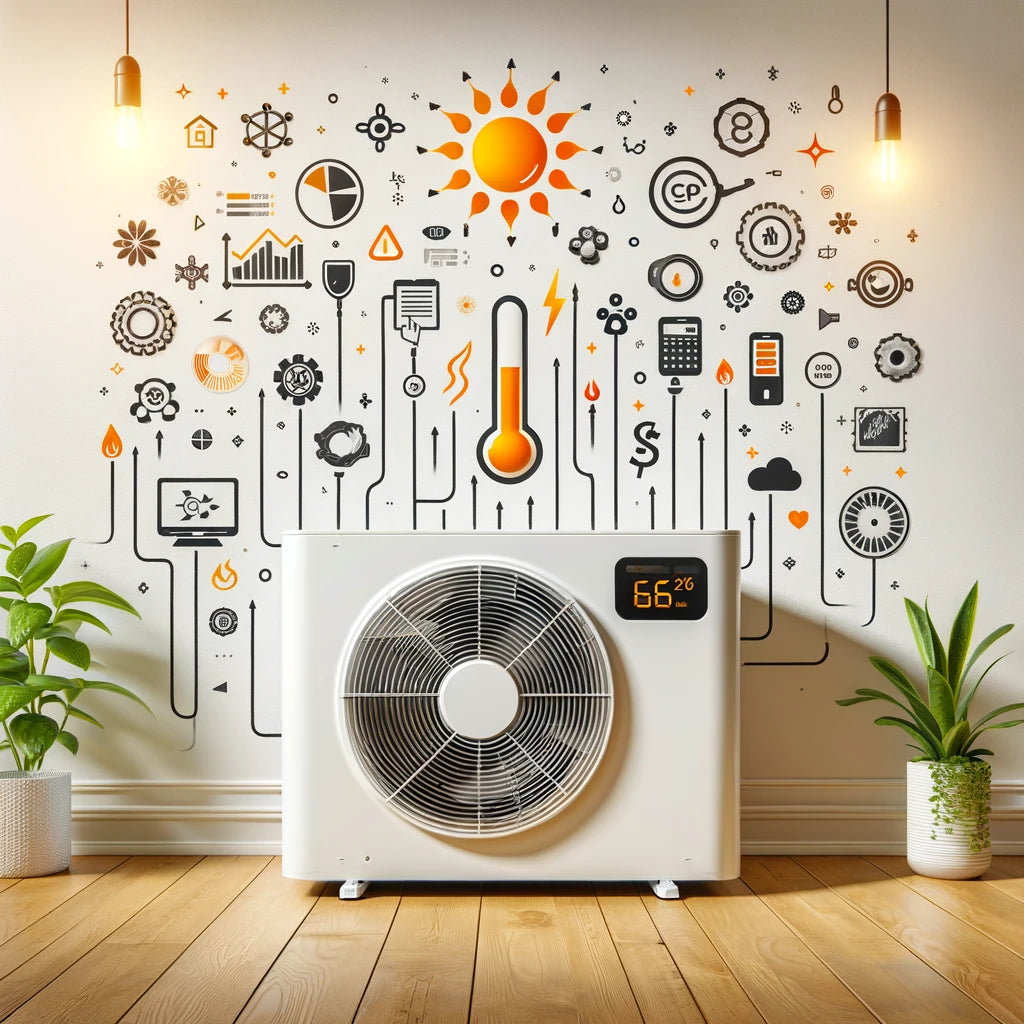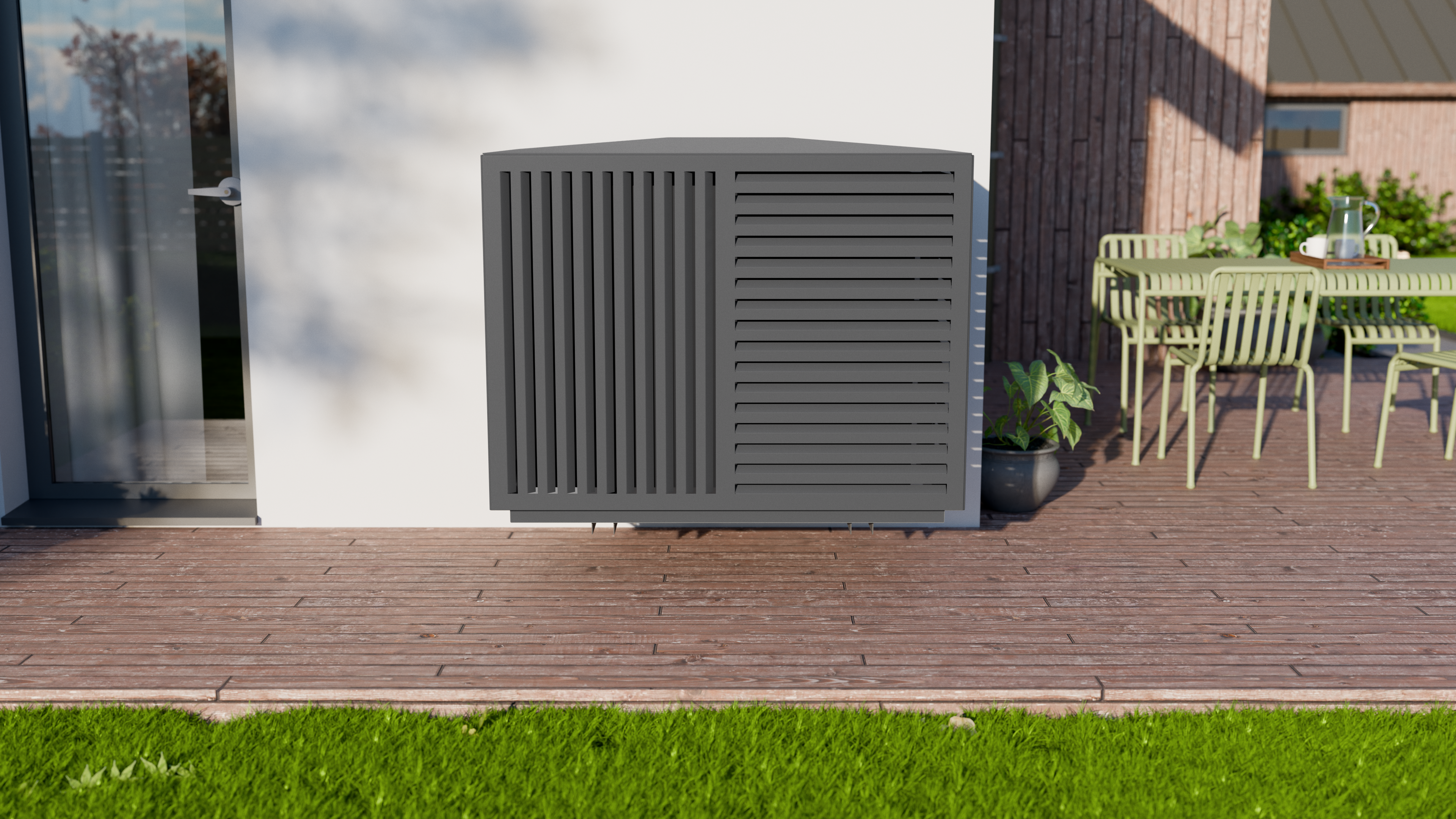Heat pump: Annual performance factor and CoP simply explained
The efficiency of heat pumps is an essential factor for sustainable and cost-efficient heating. If you take a closer look, you will inevitably come across the seasonal performance factor (SPF) and the CoP (coefficient of performance).
But what exactly do these figures mean?
In this article, we will explain the difference between JAZ and CoP and tell you which JAZ a BAFA subsidy is linked to.
What is the annual performance factor (APF)?
The efficiency of a heat pump is determined by the relationship between the heat emitted and the energy used. The so-called annual performance factor of your heat pump acts as an indicator of this efficiency: it describes the relationship between the energy generated over a period of 12 months (flow temperature for the respective heating circuits and domestic water heating) and the electrical energy consumed in a year. The annual performance factor of a heat pump is only determined during actual heating operation and can therefore be regarded as a "practical efficiency factor".
For example, an annual performance factor of 3 means that your heat pump system produces 3 kWh of heating power from 1 kWh of electricity (ratio 1:3). The higher the annual performance factor, the more efficiently your heat pump works.
What is the Coefficient of Performance (CoP)?
As you now know, the annual performance factor measures the efficiency of your heat pump based on practical conditions over a period of one year. In contrast, the so-called CoP indicates the efficiency of the heat pump under laboratory conditions and represents a snapshot.
It usually appears under the specifications in the heat pump data sheet and, as a "theoretical efficiency", gives you a reference point for assessing the efficiency of a heat pump. As with the seasonal efficiency, the same applies to the CoP: the higher the number, the better.
How to determine the annual performance factor of your heat pump
You can easily calculate the annual efficiency of your heat pump by dividing the amount of heat produced annually by the annual electricity consumption.
If the annual performance factor of your heat pump is 3 or more, this is evidence of particular efficiency. However, it is important to note that different types of heat pumps have different levels of efficiency, which results in different average values for the CoP and the annual performance factor. In addition, a distinction should be made between old buildings and new buildings: older existing buildings, for example, place higher demands on the heat pump due to their thermal insulation and heat requirements, so a slightly lower annual performance factor is considered a guideline.
The temperature of the heat source and the flow temperature of your heating system are particularly important for a good seasonal efficiency of your heat pump. With a high heat source temperature in combination with a low flow temperature, efficiency increases because the heat pump only has to overcome a minimal temperature difference.
Expert tip: If you are installing a heat pump, it may make sense to integrate two additional devices into your home: a heat meter and a specific electricity meter for the heat pump. While the latter gives you access to discounted heat pump electricity tariffs, the heat meter gives you more precise insights into the performance of your heat pump.
JAZ and BAFA funding: Which values are required?
When applying for BAFA funding, the annual performance factor of your heat pump is an important criterion. For old buildings, compliance with the following annual performance factors is mandatory [as of October 2023]:
- Brine-water and water-water heat pumps in residential buildings: 3.8
- Brine-water and water-water heat pumps in residential buildings: 3.8
- Brine-water and water-water heat pumps in non-residential buildings: 4.0
- Air-water heat pumps: 3.5
- Gas-fired heat pumps in residential buildings: 1.25
- Gas-fired heat pumps in non-residential buildings: 1.3
For heat pump systems in new buildings, a higher annual performance factor is generally required:
- Electrically operated heat pump: 4.5
- Gas-powered heat pump: 1.5
Expert tip: Thanks to the inverter technology used, current air-water heat pumps can achieve better performance and thus exceed the required annual performance factor of 3.5.
Conclusion
Both the annual performance factor and the CoP are crucial indicators for assessing whether your heat pump is performing optimally in terms of consumption and heating output. While the CoP value always refers to a specific laboratory situation, the annual performance factor of your heat pump is a realistic representation of the efficiency in actual heating operation. The annual performance factor is also particularly important when applying for BAFA funding: For both old and new buildings, certain annual performance values must be achieved in order to meet the funding criteria.
It is therefore worth keeping a close eye on these values.










Leave a comment
This site is protected by hCaptcha and the hCaptcha Privacy Policy and Terms of Service apply.